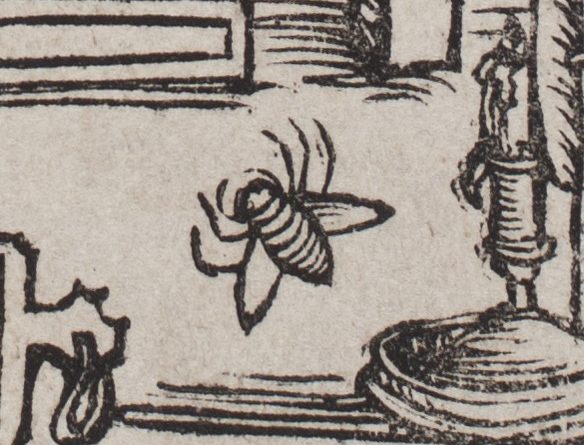Published in: Berkovskie chteniya. Berkov Readings: Book culture in the context of international contacts. Proceedings of the International Scientific Conference. Pinsk, 29-30 May 2019. Minsk, Moscow: Central Scientific Library of the National Academy of Sciences of Belarus, Center of Study of Book Culture, FSGF Scientific Research Center “Nauka”, 2019. P. 269-276
The article examines Francysk Skórin’s [*] famous portrait (1517 and 1518) in the context of the 15th – 16th centuries aesthetics. In the framework of the semiological analysis, Ilya Lemeshkin examines the text elements that accompany the portrait. His analysis leads to the sensational conclusion: the presence of the fly on Francysk Skórin’s portraits is explained by musca depicta phenomenon, nearly as a trompe-l’oeil or as “an illusion of a double-image system”.
This article summarizes the main lines of Ilya Lemeshkin’s paper “She has been sitting here (1517) and had flown away (1518): Musca depicta on F. Skórin’s portraits – «Здесь сидела (1517), да улетела (1518): Musca depicta на портретах Ф. Скóрина» (upcoming in Древняя Русь, 2020).
Read the full text of “The (un)expected guest on F. Skórin’s portraits” in Russian here: Илья Лемешкин. (Не)жданная гостья на портретах Ф. Скóрина
***
[*] The portrait of the publisher from 1517, uses the form skwrin. This form of anthroponym, being the basis for derivative skorina, also appears in the Czech royal records, in the decree of Ferdinand I from 29.01.1552 – skorýn (Národní archiv. F. 182: Registra, Praha, T. 51). We do not see any artistic or paleographic reason to restore the ending -a, as is traditionally done. Moreover, there is no such need, because the form skwrin (adj. skor-in7 means “made of leather, leather, fur, associated with the manufacture of leather”, derived from Old Russian “skora” “leather, fur”), being a word basis, is logical. This anthroponym is potentially possible to inflect by the cases as belonging to the 1st declination type: Скóрин, Скóрина, Скóрину, Скóрина, Скóрином, Скóрине. Therefore, the article uses this alternative form, in accordance with original. More about anthroponym:Лемешкин И. Симеон Рус и Франциск Скоринa // Lietuvos mokslų akademijos Vrublevskių biblioteka, [t.] 2013–2014. Vilnius, 2018. P. 10–33; Лемешкин И. 1470 – год рождения Ф. Скóрина // Францыск Скарына: новыя даследаванні. Мінск, 2019. P. 23–85.
